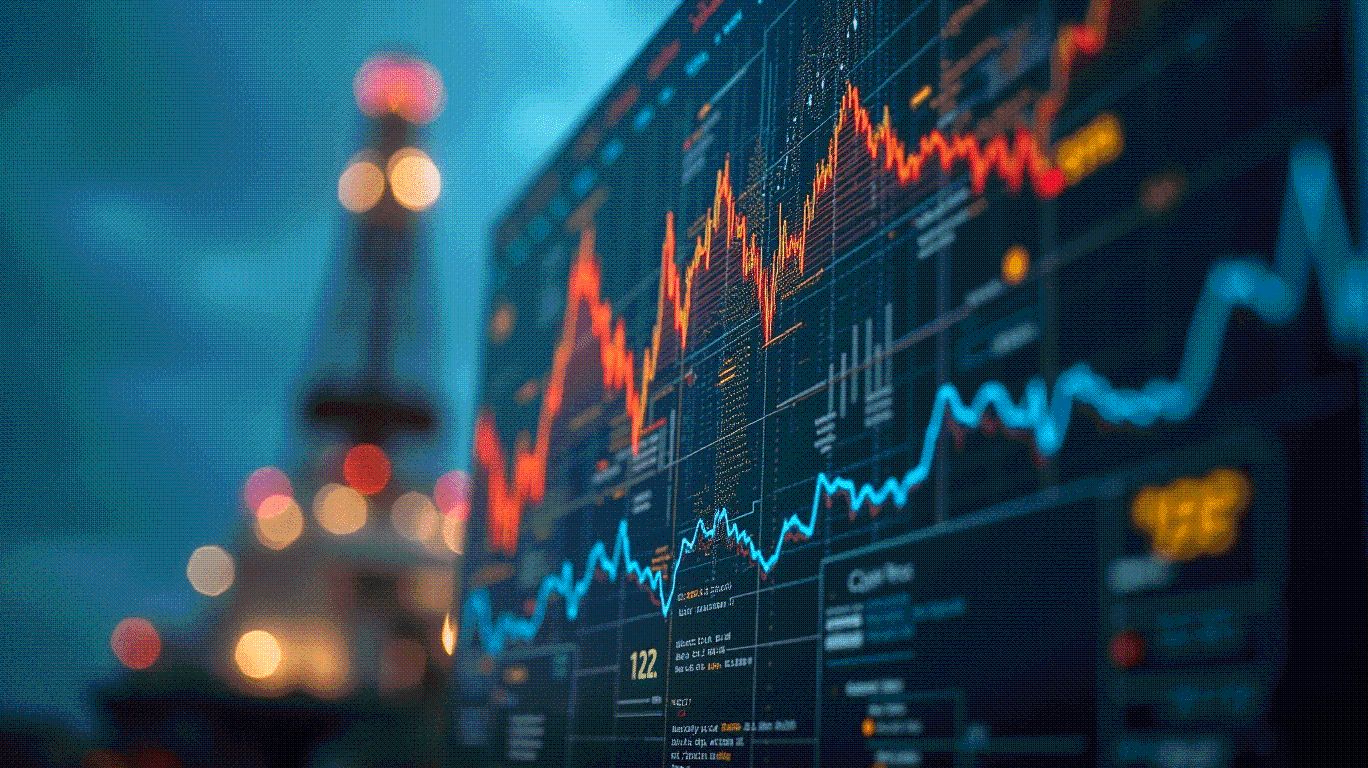Silver's Silent Revolution: How Housing Demand and Demographics Are Fueling a Bull Case for SIVR
- Global silver demand surges from housing construction and aging populations, driven by smart homes, solar tech, and healthcare infrastructure. - Structural supply deficits persist as mining output stagnates, creating a 800M-ounce gap between industrial demand and production since 2021. - SIVR ETF offers direct physical silver exposure, leveraging undervaluation (gold-silver ratio at 90-100:1) and industrial scarcity amid demographic-driven demand. - Aging populations and green energy transitions position
The global silver market is at a pivotal inflection point , driven by a perfect storm of structural supply constraints, surging industrial demand, and demographic-driven economic cycles. While the metal's role in renewable energy and electronics has dominated headlines, a quieter but equally powerful force is reshaping its trajectory: the housing sector's evolving relationship with silver. Coupled with the "Silver Tsunami" of aging populations, this dynamic is creating a compelling case for physical silver investment—particularly through the abrdn Physical Silver Shares ETF (SIVR).
The Housing Sector's Silver Surge
From 2023 to 2025, global housing construction has emerged as a critical driver of silver demand. Modern residential infrastructure relies heavily on silver for electrical wiring, photovoltaic (PV) panels, and smart home technologies. The Asia-Pacific region, led by India's 7% annual construction growth, is spearheading this trend. By 2025, residential construction is projected to absorb over 700 million ounces of silver annually, with solar PV alone accounting for 17% of industrial demand in 2024.
The misalignment between housing demand and silver supply is stark. While residential construction is expanding at 10% annually, silver production from lead/zinc mines—its primary source—has stagnated. Recycling, though up 6% in 2024, remains insufficient to offset the gap. This creates a self-reinforcing cycle: as housing demand outpaces supply, silver's industrial value proposition strengthens, yet its price remains anchored by outdated assumptions of oversupply.
Demographics as a Catalyst
The aging population is accelerating this shift. By 2030, the U.S. senior population (aged 65+) will reach 84 million, with 50% of the 80+ cohort requiring age-specific housing and healthcare infrastructure. These facilities demand advanced electrical systems, energy-efficient materials, and AI-driven technologies—all of which rely on silver. For instance, a single smart home system can contain up to 20 grams of silver in its wiring and sensors.
Moreover, the "Silver Tsunami" is reshaping real estate investment strategies. Single-family rental (SFR) and healthcare REITs are now core allocations for institutional portfolios, reflecting the growing need for senior-focused housing. This demographic-driven construction boom is not just a short-term trend but a structural shift, with silver embedded in the very fabric of aging societies.
Structural Deficits and Undervaluation
Silver's supply-side inelasticity is compounding the imbalance. With 70% of production derived as a byproduct of base metal mining, the industry lacks the flexibility to respond to surging demand. Mine output has declined by 7% since 2016, while industrial demand has grown by 51% in the same period. The result? A cumulative structural deficit of 800 million ounces from 2021 to 2025.
This scarcity is reflected in the gold-silver ratio, a key indicator of relative value. Historically averaging 65:1, the ratio has spiked to 90-100:1 in 2025, signaling extreme undervaluation. Silver's price, despite hitting decade highs near $38/oz, remains disconnected from its fundamentals. The market is pricing in a world where supply meets demand, not one where industrial and monetary demand are colliding.
SIVR: The Strategic Play
The abrdn Physical Silver Shares ETF (SIVR) offers a direct, low-cost (0.30% expense ratio) route to capitalize on this dislocation. As a physically-backed ETF, SIVR holds silver bullion in secure vaults, avoiding synthetic exposure risks. Its structure aligns with the current macroeconomic environment:
- Industrial Scarcity: SIVR benefits from the 200+ million-ounce annual deficit, as industrial demand outpaces supply.
- Monetary Hedge: Silver's dual role as both an industrial metal and a store of value makes it a unique hedge against inflation and currency debasement.
- Liquidity and Accessibility: With over 95 million ounces flowing into silver ETFs in 2025, SIVR provides a liquid, scalable vehicle for investors.
A Silver Squeeze on the Horizon
The market is primed for a "silver squeeze," where a surge in demand—driven by housing, demographics, and green energy—could overwhelm the limited supply of freely traded silver. With global silver inventories at multi-decade lows, even incremental buying could trigger sharp price spikes. SIVR's physical backing ensures investors are positioned to benefit from this scenario, unlike paper-based alternatives that may lag in price discovery.
Conclusion: A Strategic Allocation
The convergence of housing demand, demographic shifts, and structural supply deficits is creating a rare investment opportunity. Silver's undervaluation, as evidenced by the stretched gold-silver ratio, suggests significant upside potential. For investors seeking exposure to a commodity at the intersection of industrial and monetary demand, SIVR offers a compelling, cost-effective solution.
As the world builds for an aging population and a greener future, silver is not just a metal—it's a foundational asset. The question is no longer if the price will rise, but when.
Disclaimer: The content of this article solely reflects the author's opinion and does not represent the platform in any capacity. This article is not intended to serve as a reference for making investment decisions.
You may also like
Dogecoin (DOGE) vs. Mutuum Finance (MUTM): Evaluating Short-Term Volatility vs. Long-Term DeFi Utility in September 2025
- In 2025, Dogecoin (DOGE) relies on meme-driven retail hype while Mutuum Finance (MUTM) builds DeFi infrastructure with institutional-grade security. - DOGE's $0.209–$0.242 range reflects high volatility and speculative NVT/MVRV ratios, contrasting MUTM's presale traction and projected 8,571% ROI by 2026. - MUTM's dual-lending framework, USD-pegged stablecoin, and CertiK audit create structured growth, outperforming DOGE's limited utility and market whims. - Institutional validation through $14.83M presal

The Fragile Edge of DeFi: Assessing the Long-Term Viability of Decentralized Exchanges Amid Whale-Driven Volatility
- A $47.5M XPL token manipulation on Hyperliquid exposed DeFi's systemic vulnerabilities, including thin liquidity and lack of safeguards. - Whale addresses exploited isolated margin systems to trigger $7M+ retail losses through rapid price surges and cascading liquidations. - The incident highlights DeFi's paradox: transparency enables both market visibility and predatory strategies by concentrated actors. - Investors are urged to avoid speculative pre-launch tokens while platforms debate regulatory frame

Navigating the Fed's September Rate Cut: Timing, Impact, and the Shadow of Political Pressures
- Fed's 2025 September meeting faces pressure to cut rates amid 2.1% inflation vs. 2% target and 1.4% GDP growth. - Political tensions rise as Trump administration criticizes Fed independence through tariff policies and personnel disputes. - Market anticipates 25bp rate cut (82% probability) but fears politicization could undermine central bank credibility. - Investors advised to prioritize quality equities and short-term bonds amid inflation risks from persistent tariffs.

AI Is Democratizing Cybercrime—Making Hackers Obsolete
- Anthropic's report reveals cybercriminals weaponize AI to automate attacks, lowering technical barriers for cybercrime. - AI tools enable data extortion, fake job scams, and ransomware-as-a-service, targeting healthcare, government, and tech sectors. - North Korean hackers use AI to create fake identities for remote jobs, bypassing sanctions and skill requirements. - AI-generated ransom notes analyze financial data to set extortion amounts, marking a new phase in cybercrime tactics. - Anthropic bans abus
